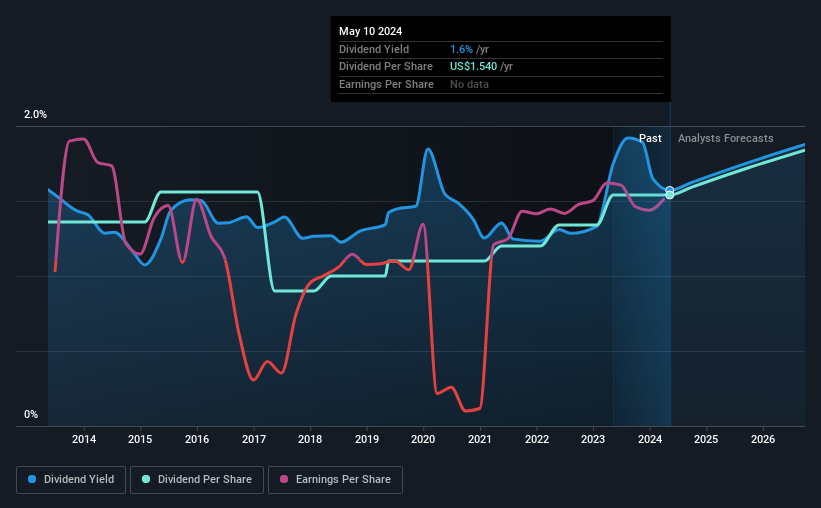Ashland (NYSE:ASH) Is Paying Out A Larger Dividend Than Last Year
Ashland Inc. (NYSE:ASH) has announced that it will be increasing its periodic dividend on the 15th of June to $0.405, which will be 5.2% higher than last year's comparable payment amount of $0.385. This takes the annual payment to 1.6% of the current stock price, which unfortunately is below what the industry is paying.
See our latest analysis for Ashland
Ashland's Earnings Easily Cover The Distributions
If it is predictable over a long period, even low dividend yields can be attractive. Prior to this announcement, Ashland's dividend was comfortably covered by both cash flow and earnings. This means that a large portion of its earnings are being retained to grow the business.
The next year is set to see EPS grow by 60.0%. If the dividend continues on this path, the payout ratio could be 27% by next year, which we think can be pretty sustainable going forward.
Dividend Volatility
The company's dividend history has been marked by instability, with at least one cut in the last 10 years. The dividend has gone from an annual total of $1.36 in 2014 to the most recent total annual payment of $1.54. This implies that the company grew its distributions at a yearly rate of about 1.3% over that duration. The dividend has seen some fluctuations in the past, so even though the dividend was raised this year, we should remember that it has been cut in the past.
The Dividend Looks Likely To Grow
Growing earnings per share could be a mitigating factor when considering the past fluctuations in the dividend. It's encouraging to see that Ashland has been growing its earnings per share at 48% a year over the past five years. Ashland is clearly able to grow rapidly while still returning cash to shareholders, positioning it to become a strong dividend payer in the future.
Ashland Looks Like A Great Dividend Stock
Overall, a dividend increase is always good, and we think that Ashland is a strong income stock thanks to its track record and growing earnings. Earnings are easily covering distributions, and the company is generating plenty of cash. Taking this all into consideration, this looks like it could be a good dividend opportunity.
Investors generally tend to favour companies with a consistent, stable dividend policy as opposed to those operating an irregular one. However, there are other things to consider for investors when analysing stock performance. For example, we've picked out 2 warning signs for Ashland that investors should know about before committing capital to this stock. Looking for more high-yielding dividend ideas? Try our collection of strong dividend payers.
Have feedback on this article? Concerned about the content? Get in touch with us directly. Alternatively, email editorial-team (at) simplywallst.com.
This article by Simply Wall St is general in nature. We provide commentary based on historical data and analyst forecasts only using an unbiased methodology and our articles are not intended to be financial advice. It does not constitute a recommendation to buy or sell any stock, and does not take account of your objectives, or your financial situation. We aim to bring you long-term focused analysis driven by fundamental data. Note that our analysis may not factor in the latest price-sensitive company announcements or qualitative material. Simply Wall St has no position in any stocks mentioned.

 Yahoo Finance
Yahoo Finance 
